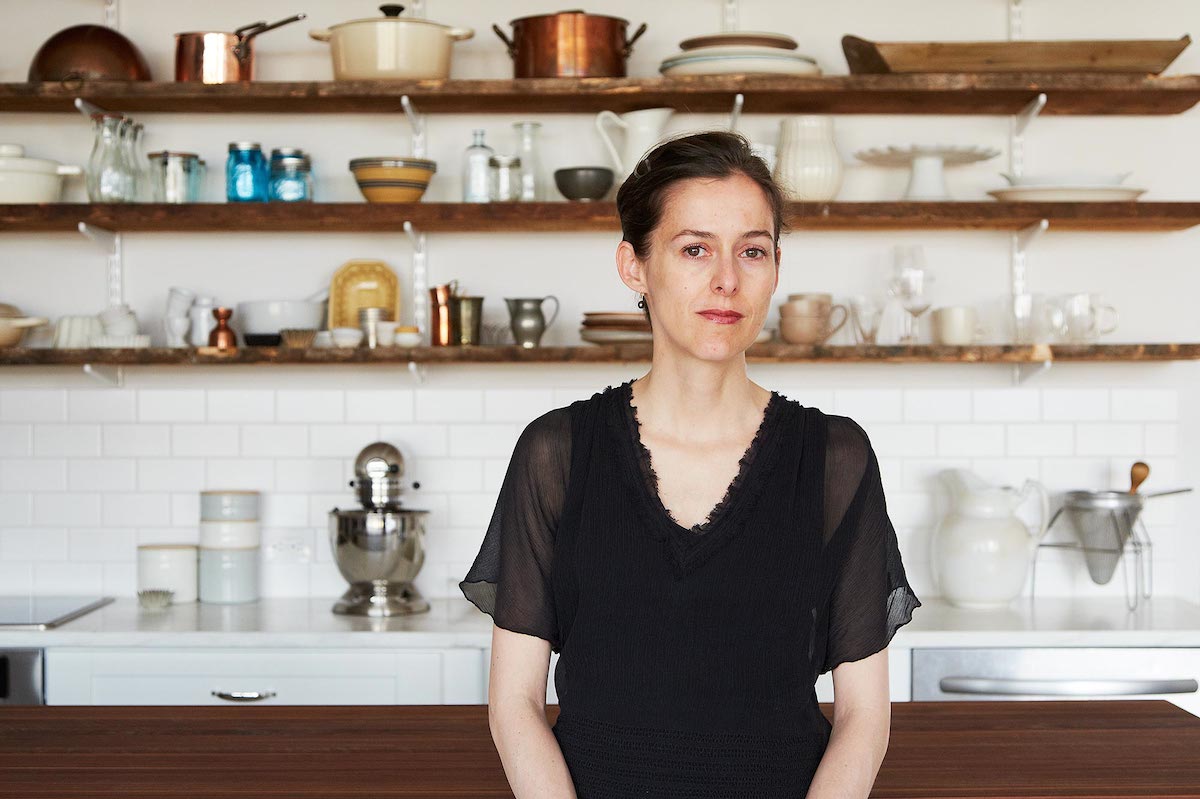On the Red Couch with Food52’s Amanda Hesser
Inside Flipboard / November 26, 2014

Tis the season to be eating—so what better person to, ahem, grill than Amanda Hesser, a founder of the mouth-watering site Food52 (that’s “52” as in 52 weeks a year). Hesser and her co-founder Merrill Stubbs have created a kind of cook’s nirvana by bringing together every aspect of a chef’s life, including inspiring recipes, advice on cookware and table decor, and a community of cooks eager to help each other out.
While all these things are presented in a beautiful manner, with must-make-that-now! photography, the real beauty of Food52 is that it’s just plain useful. That’s because both Hesser and Stubbs are thoughtful but easygoing about food. “We cook locally, we cook seasonally, but we’re not preachy about it. We’re also happy to go and eat a burger,” Hesser says.
Food52’s alluring practicality also comes from the fact that real home cooks drive most of what you see on the site. Reader expertise is harnessed via callouts and contests, and they respond in droves: Hesser says 98% of the site’s recipes and 70% of blog posts come from passionate reader-chefs. “We felt like while food blogs were growing in importance, they’re very diffuse, so the way we think of Food52 is very much like a platform for talented home cooks, bloggers and professional cooks,” she explains.
In this interview, Hesser let us in on the site’s secret sauce—just how they’ve managed to cultivate such a vibrant community around food. Their Flipboard magazines contain not-so-secret tips about how to make your Thanksgiving feast—or any culinary experience—delicious and fulfilling.
Do you vet the community’s recipes before you publish them?
Anyone can upload any recipe to the site, so the short answer is no. But it’s a little bit more complicated than that. That’s the secret to our model—there’s vetting on a number of levels. For example, we don’t make it easy for you to upload a recipe. We make you put in all the ingredients and steps. That’s a reason that so many of our 31,000 recipes are of very high quality. It’s not something that you’re going to do on a whim; it’s people who are wanting to compete and they feel like their recipe is great.
Once the recipes come in, a team selects a percentage to test. (We have testers all over the country and in Canada.) We photograph [the finalists], and then the community votes on the winners. We designed the site for the community to participate in lots of different ways. High touch would be participating in a recipe contest. Low touch might be voting on a recipe contest, commenting on a recipe, favoriting a recipe, favoriting a blog post or favoriting a product. The community is constantly curating the site without realizing it. We want people to naturally interact with the site and have those interactions be meaningful.
What kinds of things have you learned about cooking from your community?
So many things! Quinoa and kale happen to be two of the most search ingredients on our site, which tells you something about our audience. This recipe was on the site before those two became really big. It has a little bit of goat cheese. It has Meyer lemon zest, a little bit of nut oil. It’s one of those recipes that’s very simple to do, and the flavors really come together in this interesting way. It’s the kind of dish where if you took it to a party everyone will ask the recipe for it.
That’s the kind of thing we find over and over. Because our recipes come from home cooks, they’re very resourceful; they’re not going to dirty a billion pots because they’re going to be the ones who have to clean them. It’s often about toasting something to give it a little extra flavor or texture. It’s those tiny details that really do amplify the flavor or character of a recipe. That’s why the recipes on our site are very accessible: They tend to be five or six ingredients, a few steps, because they’re they’re cooking after work and on the weekends.
Do you think home cooks are an endangered species?
Absolutely not. I think home cooking is going through a major renaissance. I think people cook differently at home. Part of the food revolution that’s happening is that people are so excited about food and all the cool things that you can eat, and they want to know more and more about it. I think the thing that’s different is that it’s not cooking Monday to Friday and going out on the weekend. It’s really cooking here and there, more out of curiosity than necessity. It’s cooking by choice as opposed to it being a chore. That’s great, in my view, because that will make the kitchen much more welcoming to a larger number of people.
How do you get your kids to try new foods?
We basically decided when they were born that we were going to serve dinner, and that’s dinner. There’s no “I don’t like this.” I mean yes, anyone has the option to not like something, but that doesn’t mean they don’t have to eat it. We kind of took the old-school approach. Food is a joyful thing. Eating what was made for you is a way of showing respect to each other and the person who made it. You might not like mushrooms but your sister might. You eat mushrooms this time and the next time you’ll get something that maybe she doesn’t like. It’s about compromising and truly sharing with others.
Do you have any tips for working parents on how they can meal-plan for the week and eat healthfully?
I don’t feel like I’m the master of any of this, but what has been working for us is I will shop and cook on the weekends and I’ll plan out the meals for the week in a sort of old-fashion way that my mom used to do. She would shop for the week. I find that if I try to figure it out on a daily basis; it doesn’t happen or the results aren’t pretty. As a result, I’ll cook bigger batches of some things and try to use the leftovers from this to mix into that. In fact, we have a column on the site that’s like “one tub of yogurt, six meals” to get at [this idea]. I don’t cook one thing and hope it’s going to last for the week because I feel like by the end it’s “I never want to see that dish again.”
Aside from deliciousness, what do you look for in a meal?
Something that feels joyful. I’m increasingly interested in food that you can assemble. I like serving things more family-style now so that people can interact with what you’ve cooked as well. Maybe that comes from having kids, and they want to get their hands in stuff which is really exciting. You realize that this is a natural human desire to touch the food that you’re eating and have a part in it. It has changed the way I think about what I make.
Check out Food52 on Flipboard.
~MiaQ is reading “Balancing Time & Energy”
/flipboard
@flipboard
+flipboard





